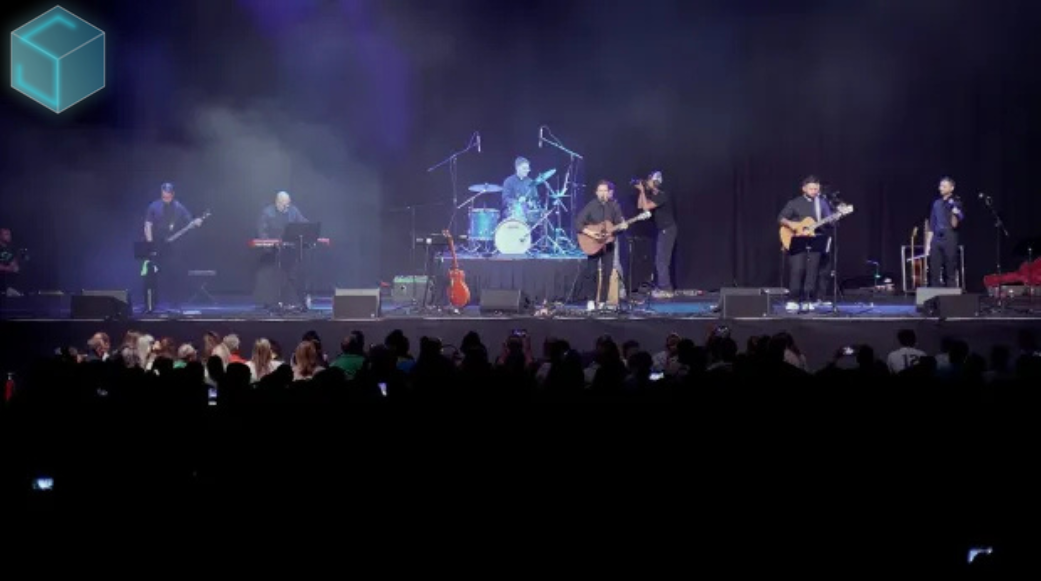
August 20, 2025
Imagine six Catholic priests performing at a sold-out Houston show instead of a well-known pop star. Their band's performance combined messages of prayer, celibacy, and faith with elements of rock...
Read more.png)
August 20, 2025
Nostalgia, Mother Mother’s latest album, is one of those rare creations. It invites us into a world where lightness isn’t escapism—it’s a form of resistance, a beacon of hope, and a path forward....
Read more
August 19, 2025
When Anna of the North released “Lovers” in 2017, it was already a dreamy synth-pop gem, filled with wistful vocals and lush production that captured the ache of young romance. But it wasn’t until...
Read more
August 19, 2025
“Let Me Know” ft. Future started out as a moody, late-night playlist type of track, the kind you blast in your car pretending you’re in a music video while stuck in traffic. But now? It’s become...
Read more
August 19, 2025
“Your Idol” stands out in Kpop Demon Hunters not just as a catchy track, but as one of the most self-aware songs in the whole project. At first listen, it has all the hallmarks of a classic K-pop...
Read more
August 19, 2025
If you’ve scrolled TikTok, Insta, or literally any corner of the internet in the past few weeks, you’ve probably heard it: the fizzy, feel-good bop known as “Soda Pop” by the Saja Boys. Straight...
Read more
August 19, 2025
Skai Is Yourgod didn’t just drop a song, he dropped a cultural grenade. His track “Stacks From All Sides” has taken TikTok by storm, and the secret sauce? A cheeky little sample from Beetle on...
Read more
August 19, 2025
After 70 weeks at No. 1 with “Too Sweet,” Hozier’s reign on Billboard’s Hot Rock Songs chart comes to an end as newcomer Sombr takes over with...
Read more
August 19, 2025
Charli XCX brought her groundbreaking Brat era to a poignant close Friday night during an electrifying performance at South Korea's One Universe Festival. The pop innovator marked the final...
Read more
August 19, 2025
Taylor Swift’s appearance on Travis and Jason Kelce’s New Heights podcast drew 1.3M live viewers, breaking YouTube records and sparking buzz with details about her new album The Life of a...
Read more
August 19, 2025
After a six-year silence, Chance the Rapper is officially back. On August 15, 2025, he will drop his sophomore album, Star Line, marking a new chapter filled with growth, travel, and creative...
Read more
August 19, 2025
Lana Del Rey’s new song takes aim at Ethel Cain, referencing an alleged personal rift involving Instagram posts, a mutual ex, and behind-the-scenes remarks...
Read more.png)
If you’ve been writing music for a decade but are just starting to dive into vocal melodies, you’re not alone in facing challenges with phrasing and creating vocal dynamics that don’t feel repetitive or too tightly aligned with the instrumental melody. While this side of the creative process can feel unfamiliar, there are some strategies that can help you approach vocal writing with more confidence and purpose.
Let’s explore these techniques with examples of artists and songs that execute each point exceptionally well.
One of the most important things to keep in mind when writing vocal melodies is that they don’t always need to align perfectly with the instrumental melody. Some of the most interesting vocal lines contrast with or weave through the instrumentation in unexpected ways.
One of the key challenges you mentioned is finding the right phrasing—when to make changes and how to create vocal dynamics. Phrasing is all about where you place your vocal lines within the music and how you use rhythm to make the melody more interesting.
Dynamics play a huge role in making your vocal melody feel alive and emotionally compelling. Think of dynamics as the volume, intensity, and emotional arc of your vocal performance.
To avoid having your vocal melody sound like a copy of the instrumental line, create contrast between the two. Here are some ways to break away from the instrumental melody:
Sometimes, the lyrics themselves can help guide the melody. The natural rhythm and cadence of the words can inspire where the melody should rise and fall. Pay attention to the emotional content of the lyrics as well—use the melody to reflect and amplify the feelings expressed in the words.
It’s important to give yourself the freedom to experiment and go with the flow when writing vocal melodies, especially if this side of the creative process is new to you. At the same time, staying intentional about the choices you make can help you craft something truly unique.
Writing vocal melodies and phrasing is a different skill set from composing instrumental music, but with practice and experimentation, it will become more natural. Focus on creating contrast, experimenting with phrasing, using dynamics to shape your melodies, and letting the lyrics guide you. Above all, trust the process and enjoy the creative journey.
By applying these principles—like the artists mentioned above—you can craft vocal melodies that stand out and enhance your music, transforming your rough sketches into full, dynamic tracks.
Got any tips or techniques for writing vocal melodies? Let’s chat in the comments below!